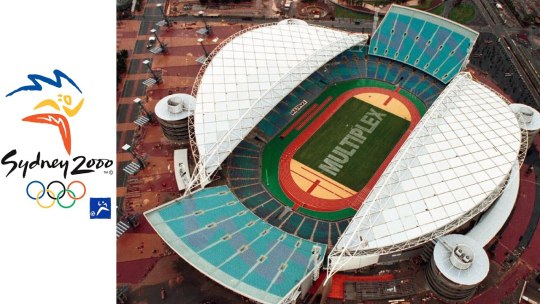#eportfoliose
Text
Sports fan activation innovation at a sport event.
Sports events are growing and becoming much Larger than the game itself in modern times. Gone are the days whereby sporting events are just a single spectacle. Through event planning these occasions are now a network of sponsorship and fan activations that make the most out of the gathering of people from both an entertainment and commercial perspective.
As sports are one of the few remaining reliable drawcards for foot traffic it has become increasingly important for organisations and brands alike to capitalise on the unique opportunities it presents. This is due to the fact they are competing with the slew of advertising and promotion achieved through digital and social media platforms. Sports fans activations have become a vital tool for events planners to achieve these very results (figure 1.1)
Figure 1.1

‘Sponsorship activation, traditionally involving linked advertising and promotional tools, such as sweepstakes, competitions, product sampling and themed brand websites, has evolved considerably over recent years. This has been due, in part, to advances in new technologies, including social media’ (Dees 2011)
‘The sponsorship of sporting events represents an established form of marketing promotion, with global sponsorship expenditure totalling $55.3 billion in 2014’ (IEG, 2015). This is huge money to be spending on advertising for sports the reality is that the general public love sport and have a great affinity for it. Companies and products will spend large amounts to market themselves to a passionate and engaged sports crowd, the challenge is to make it effective in the form of activations.
Gillooly et al (2017) explains that ‘it is becoming routine for a whole series of spin-off events to be activated by sponsors around a sporting occasion’. They go on to state that these include ‘varied activities, such as VIP parties, bespoke customer areas, visitor attractions, sponsorship-linked roadshows and on-site activations.
An example of this type of activation was the ‘Samsung Galaxy Studios in the Rio 2016 Olympic Park allowed visitors to interact with the company's products and technologies, including the opportunity to "experience" Olympic sports such as kayaking, using Samsung virtual reality products and 4D technology’ (IEG, 2016). This can be seen below in Figure 1.2. and Figure 1.3
Figure 1.2

Through activations such as the ‘Samsung Galaxy Studios’ brands are able to both enhance the sporting experience for fans while also promoting their product. This gives them great cut through to the consumer as they are advertising to them in a manner that is seamless with the enjoyment they experience while live at a sporting event. Activations at events are definitely effective advertising tools that will be utilised even greater into the future.
References
Dees, W., (2011), "New media and technology use in corporate sport sponsorship: performing activational leverage from an exchange perspective", International Journal of Sport Management and Marketing, Vol. 10 Nos no. 3-4, pp. 272-285.
Gillooly, L., Crowther, P., & Medway, D. (2017). Experiential sponsorship activation at a sports mega-event: the case of Cisco at London 2012. Sport, Business and Management: An International Journal, 7(4), 404–425. https://doi.org/10.1108/SBM-04-2016-0015
IEG, (2015), "New year to be one of growth and challenges for sponsorship industry", available at:, www.sponsorship.com/iegsr/2015/01/06/New-Year-To-Be-One-Of-Growth-And-Challenges-for-Sp.aspx, 3 August 2015).
IEG, (2016), "Rio 2016 sponsor profile. TOP sponsor - Samsung", available at:, www.sponsorship.com/Latest-Thinking/Rio-2016-Olympic-Sponsorship-Insights/Samsung.aspx, 19 December 2016).
Rio Olympics.com
Samsung.com
Figure 1.3
youtube
0 notes
Text
Olympic Games legacy.
Is the Olympic games losing its touch? Has the event that captures the imagination of the world once every four years lost some of it’s appeal and are we seeing the starting to see the decline of this great event. All these questioned must be asked when examining the Olympic games legacy.
The games have been one of the biggest sporting events in the world but the legacy of the pinnacle of athletics could be tarnished by the corporate sponsorship and commercialisation of the event. In its purest form the Olympics has portrayed a legacy of clean athletes striving for the very best, gold medals and world records in their chosen event. Every four years the event itself has seemed to get bigger and bigger along with more commercialized.
Furthermore, the cost of the games has increased, Lauermann (2019) highlights that ‘the mega-event industry is increasingly struggling to find cities willing to host. Between 2013 and 2018, 13 cities cancelled their bids to host the Olympics, either in response to negative referenda or aft er political pressure on city leaders.’
This displays how the Olympic games is starting to lose its legacy, with the games being seen as not cost effective to host cities. The once glamorous event, hosted by cities such as Sydney, (figure 1.1) Beijing and London is struggling to attract cities willing to spend the money necessary to continue the quality of the games. This is starting to become a huge issue to the Olympics, in terms of its legacy into the future.
Figure 1.1

Understandably, the Olympics works on improving its image and legacy, as an event it looks for ways in which it can better run itself, one of these prevalent in the modern day is sustainability. Gulijiazi et al. (2021) contends that ‘Sustainability is now fully integrated into the entire life cycle of the Olympic Games. The planning, preparation, and staging of the Winter Olympics have opportunities to create a sustainable legacy for the host cities for decades’. Kiuri et al. (2013) states that ‘the Olympic stadium can offer new possibilities for its space and its use in relation to the city’.
On the positive side, the Olympics legacy is one that promotes striving for greatness and general better health, fitness, and wellbeing. The cost of Olympic medals is large, but the impact athletes can have on future generations in the space of general health and wellbeing is huge. See an example (figure 1.2) of Cathy Freeman through her foundation, still encouraging heathy behaviour after her inspirational triumph and gold medal in the 2000 Olympics, a legacy such as this is priceless. These are some of the positive impacts the games can have on national and international communities, the question is whether the funding is worth it in the end.
References
Cathy Freeman Foundation Youtube.com
Gulijiazi Yeerkenbieke, Chunci Chen, & Guizhen He. (2021). Public Perceived Effects of 2022 Winter Olympics on Host City Sustainability. Sustainability (Basel, Switzerland), 13(3787). https://doi.org/10.3390/su13073787
Kiuri, M., & Reiter, S. (2013). OLYMPIC STADIUM DESIGN: PAST ACHIEVEMENTS AND FUTURE CHALLENGES. ArchNet-IJAR : International Journal of Architectural Research, 7(2), 102–117. https://doi.org/10.26687/archnet-ijar.v7i2.158
Lauermann, J. (2019). The Urban Politics of Mega-Events. Environment and Society, 10(1), 48–62. https://doi.org/10.3167/ares.2019.100104
Olympics.com
Samsung.com
Figure 1.2
youtube
0 notes